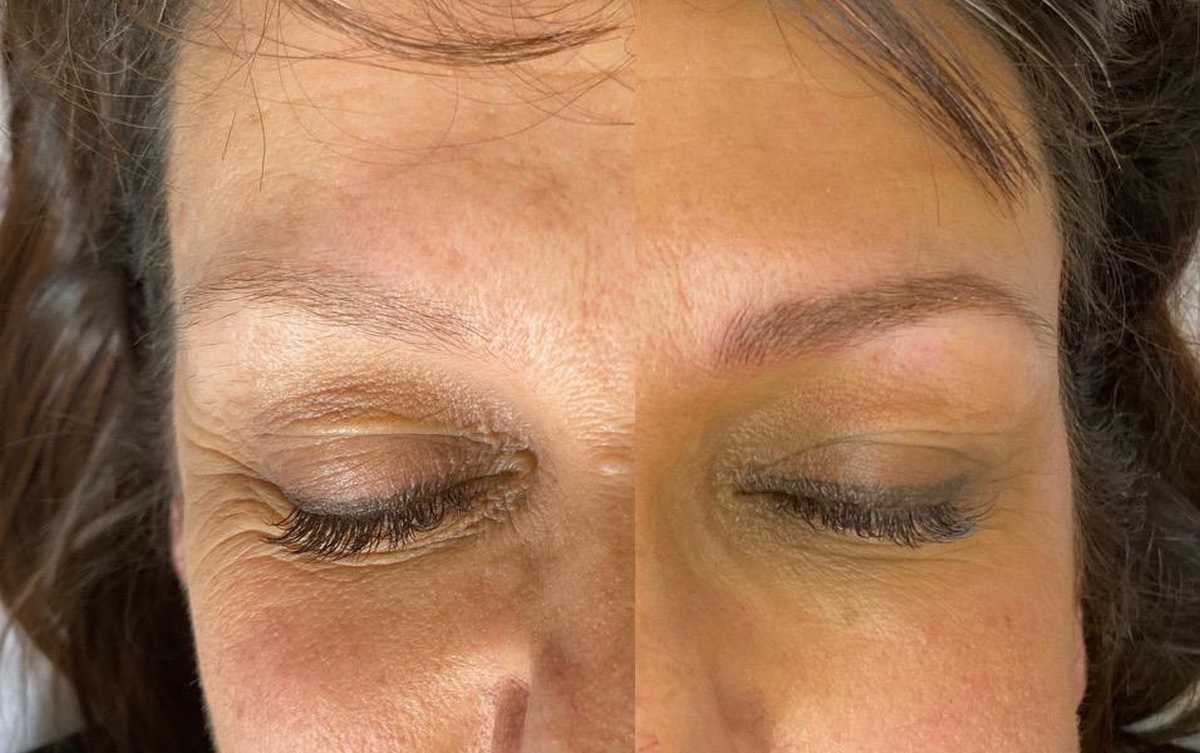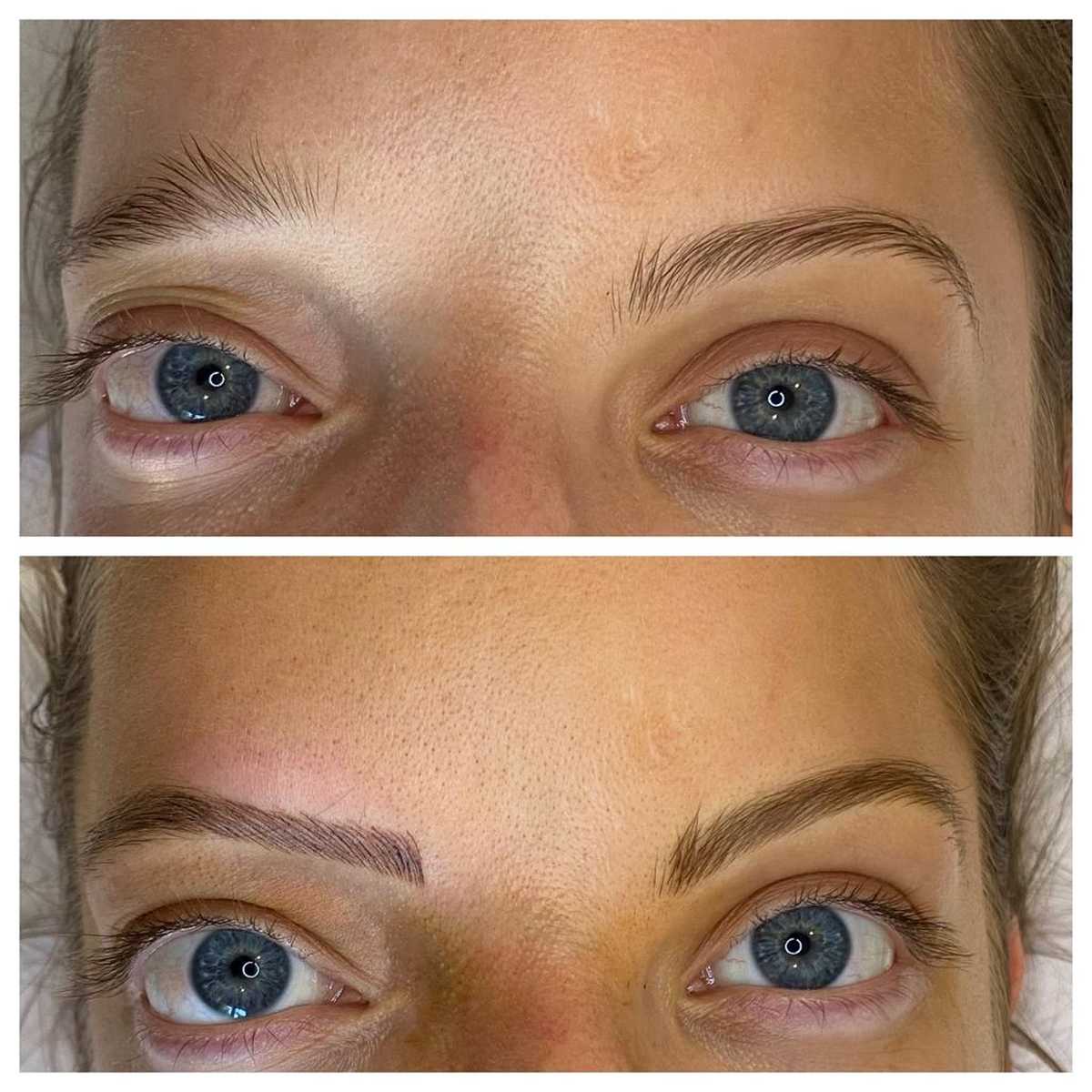Powder brows are a semi-permanent tattooing technique that gives the eyebrows a soft, shaded, and powdered look. This method has become increasingly popular due to its long-lasting effects and the natural, polished appearance it provides. However, the key to maintaining beautiful powder brows lies in understanding the healing process and following the proper aftercare instructions.
In this guide, we will explore everything you need to know about the healing stages of powder brows and the essential aftercare steps to ensure your brows look their best for years to come.
Let’s get straight to the point
Powder brows are a semi-permanent tattoo technique that provides a soft, shaded look. Proper healing and aftercare are essential for long-lasting results. Key aftercare tips include avoiding touching or rubbing the brows, keeping them dry, and not applying makeup.
There are two aftercare methods: wet healing (with ointment) and dry healing (no products). Factors like skin type, age, and lifestyle can affect healing. Regular touch-ups ensure the longevity of your powder brows.
Consistency in aftercare is crucial for achieving vibrant, long-lasting results.
Powder Brows Healing Stages
Understanding the healing process is crucial for ensuring that your powder brows heal properly and retain their beautiful appearance. Below are the typical stages of powder brow healing:
Day 1: Immediate Aftercare
- Tenderness and Swelling: Immediately after the procedure, the treated area will feel tender, and some swelling may occur. The pigment will also appear darker than expected.
- Blotting: A few hours after the procedure, it’s important to blot the area with a cotton pad and sterile water to remove lymph fluid and prevent scabbing.
- Sanitization: Keep the area clean to avoid contamination, as the skin is highly susceptible to infection during this stage.
Days 2-4: Initial Healing
- Washing: Gently clean your brows using antibacterial soap or sterile water to prevent bacterial growth. Be careful not to scrub or rub the area.
- Thin Ointment Application: If advised by your technician, apply a very thin layer of aftercare ointment using a clean q-tip. Avoid applying too much, as your skin needs to breathe.
Days 5-7: Scabbing Stage
- Scabbing Begins: During this phase, you will notice some scabbing or peeling. It’s essential not to pick at the scabs as this can damage the pigment and the overall result.
- Moisturize If Needed: Continue applying a thin layer of ointment if instructed, as this can help soften the scabs and prevent discomfort.
Days 8-14: Color Lightening and Scab Shedding
- Shedding Scabs: Most of the scabs will naturally fall off by this point. Once all scabs are gone, you may notice that your brows look lighter and patchy—this is normal.
- Final Stages of Healing: The pigment will settle, and the true color will emerge over the next few weeks. Avoid makeup and harsh skin treatments during this time to prevent irritation.
Key Aftercare Instructions for Powder Brows
Proper aftercare plays a vital role in the longevity and appearance of your powder brows. By following these aftercare guidelines, you can ensure optimal healing and long-lasting results.
Avoid Touching or Rubbing
One of the most important aftercare tips is to avoid touching, scratching, or rubbing your brows during the healing process. Touching the treated area increases the risk of infection and can disrupt the healing process.
No Makeup or Skincare on Brows
For the first two weeks, refrain from applying makeup, skincare products, or sunscreen directly on your eyebrows. These products can interfere with the healing process and cause irritation or infections.
Avoid Excessive Sweating
Sweat can compromise the healing process, especially during the first week. Avoid intense physical activities that cause excessive sweating, such as working out or sauna sessions.
Keep Brows Dry
While gentle cleaning is necessary, it’s important to keep your brows as dry as possible otherwise. Avoid long showers, swimming, and soaking your face during the healing process.
No Picking at Scabs
As tempting as it may be, do not pick at or peel off the scabs. Allow them to fall off naturally, as picking can result in uneven pigment distribution and scarring.
Wet Healing vs. Dry Healing Methods
There are two main methods of powder brows aftercare: wet healing and dry healing. Your artist may recommend one method based on your skin type and personal preferences.
Wet Healing
- Cleaning & Ointment: In wet healing, you are required to clean the brows with sterile water and apply a small amount of aftercare ointment. This method is often recommended for those with sensitive or dry skin, as it helps prevent excessive scabbing and promotes faster healing.
- Protection: Wet healing forms a protective barrier over the treated area, which can prevent contamination and promote better skin regeneration.
Dry Healing
- Minimal Product Use: In dry healing, you avoid using any ointments or lotions on the brows. Instead, the brows are kept dry and clean without additional products.
- Natural Healing: This method relies on the body’s natural healing process. While it can work for people with oily skin, it may lead to more scabbing compared to wet healing.
Factors That Affect Healing
Several factors can impact the healing process and the final results of your powder brows:
Skin Type
People with oily skin may experience more challenges with scabbing and pigment retention, while those with dry skin may see faster healing.
Age
Younger individuals tend to heal faster, while older individuals may take a bit longer to complete the healing process.
Sun Exposure
Avoid direct sun exposure during the healing phase, as UV rays can damage the healing skin and cause premature fading of the pigment.
Diet and Lifestyle
Healthy eating, hydration, and avoiding smoking can speed up the healing process and improve the retention of the pigment.
Common Issues and Solutions
While powder brows are generally a safe and effective cosmetic procedure, some common issues can arise during the healing process:
Scabbing and Flaking
Scabbing is a normal part of the healing process. However, excessive scabbing can lead to uneven pigment distribution. To prevent this, follow your aftercare routine closely and avoid scratching.
Color Fading Too Quickly
If your brows fade too quickly, it could be due to overexposure to the sun, excessive sweating, or improper aftercare. Regular touch-ups can help maintain the vibrancy of your brows.
Uneven Pigment
It’s common for some areas to appear lighter or patchy after the initial healing phase. A touch-up session 4-6 weeks after the initial treatment is often necessary to correct any unevenness and achieve the desired look.
Conclusion
Achieving long-lasting, beautiful powder brows requires patience during the healing process and a commitment to proper aftercare. By understanding the healing stages and adhering to your technician’s aftercare instructions, you can enjoy your powder brows for years to come.
Whether you choose wet healing or dry healing, consistency in aftercare is key. Regular touch-ups will ensure that your brows remain vibrant, bold, and perfectly shaped for the long term.
Frequently Asked Questions About Powder Brows
What To Expect After Getting Powder Brows?
Your brows will look darker and more defined immediately after the surgery, and these effects could continue for up to two weeks. By days four and five, you may notice that your skin is flaking or appearing dry. It would be best if you refrained from picking at your brows and allowed this to fall out.
How Often Do Powder Brows Last?
Depending on your skin type, skin tone, and colour choice, powder brows can last anywhere from nine months to three years after a single application or eighteen to thirty-six months after two applications. Your “hair strokes” from microblading will look their best with a yearly touch up.
What Do Powder Brows Look Like After Two Years?
The contour of ombre powder brows has stayed the same for two years, and neither has the colour, though the brows are now a much lighter shade. So, the long-term effects should look like this. That proves the artist performed well and that the pigments penetrated your flesh.
Who Should Not Get Powder Brows?
Ineligible Without Exception
- Individuals under 18 years of age.
- Women who are pregnant or nursing.
- Individuals with Pacemakers or major heart problems.
- Individuals with viral infections and diseases.
- Individuals with Lupus.
- Individuals who have undergone Organ Transplants.
Can Powder Brows Get Infected?
They might also notice a greenish or brownish discharge from the area around the brow and an odour originating from that area. If the infection worsens, the redness and swelling may spread to the scalp and neck, and the edoema may spread to the eyelids. These symptoms may point to an infection known as face cellulitis caused by bacteria.



